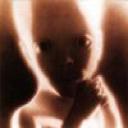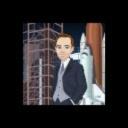Yahoo Answers is shutting down on May 4th, 2021 (Eastern Time) and beginning April 20th, 2021 (Eastern Time) the Yahoo Answers website will be in read-only mode. There will be no changes to other Yahoo properties or services, or your Yahoo account. You can find more information about the Yahoo Answers shutdown and how to download your data on this help page.
Trending News
Question about Apollo moon missions?
If I were planning to send an object to lunar orbit I would fire the engine at a point and for a length of time that would make it move in a path where the furthest point from Earth would be just on the far side of the Moon.
If you imagined yourself looking down on the Earth-Moon system, this path would look like a long oval. I believe this is called a "Hohman" orbit.
Instead NASA used an orbit that would look like a figure eight from above. Any one know the reason for this difference?
I'll give my guess; The question of how much fuel was available for the payload was so close that having the apogee of the orbit about 2000 miles closer to Earth made enough of a difference to make it worthwhile.
But 2000 miles is only a difference of 1% (a little less, even) of the total difference. Is this enough to explain it. Or was there some other reason?
thanks for the answers so far. I'll actually have to read them and ponder them a few times to really digest it all. But at the moment it sounds as though it's fair to say that while the figure eight type orbit would have brought the craft back to Earth in case of an aborted orbit insertion, the oval orbit would not have?
Let's see, if the moon were not in the neighborhood the "Hohman" orbit would certainly bring the craft home. And so would the "figure eight". It would have merely been a slightly different oval than the first one........but now there must be some important difference with the Moon in the neighborhood........
I'll give the matter some thought. Thanks.
2 Answers
- David BowmanLv 71 decade agoFavorite Answer
In addition to what quantumclaustrophobe said, the "Hohman" orbit would cause the craft to crash on the Moon, since the outbound velocity at the farthest point would be too low to maintain an orbit around the Moon. It would not have gone into orbit around the Moon or returned to Earth. it would have crashed.
The figure 8 free-trajectory orbit used by the Apollo flights needed the gravity of the Moon to turn around. Had the Moon not been there, the Apollo craft would have continued into orbit around the Sun, since they had achieved "escape velocity" when they were accelerated out of Earth orbit and out toward the Moon. The craft was moving so fast that though the Moon's gravity could change the direction of the craft's motion by 180 degrees, the Apollo modules had to fire their engines to slow enough to be captured by the Moon's gravity and to go into orbit around the Moon, prior to the descent to landing phase of the mission.
Use of the "Hohman" orbit would have required that the Apollo spacecraft fire its engine in order to speed up enough to achieve lunar orbit. Should anything have happened that prevented the firing of the main engine, the Apollo craft would have crashed onto the Moon and would not have automatically returned to the Earth.
So, the main reason for the "figure 8" orbit was crew and mission safety.
- 1 decade ago
You have your math a little wrong... the moon has mass; at about 190,000 miles, the influence of the Earth about equals that of the moon, and the moon then 'pulls' the craft, virtually free of Earth's influence.
So, the reason for a figure 8 was to get the ship there as quickly as possible, and - if the SPS engine failed to fire, it would be on an automatic return back to Earth, using the lunar gravity to direct it's course.
Making a wide oval, while burning as little fuel as possible, would add 2 to 3 days to the trip out - and, since the trajectory would cover more milage, additional course corrections would probably have been necessary.





